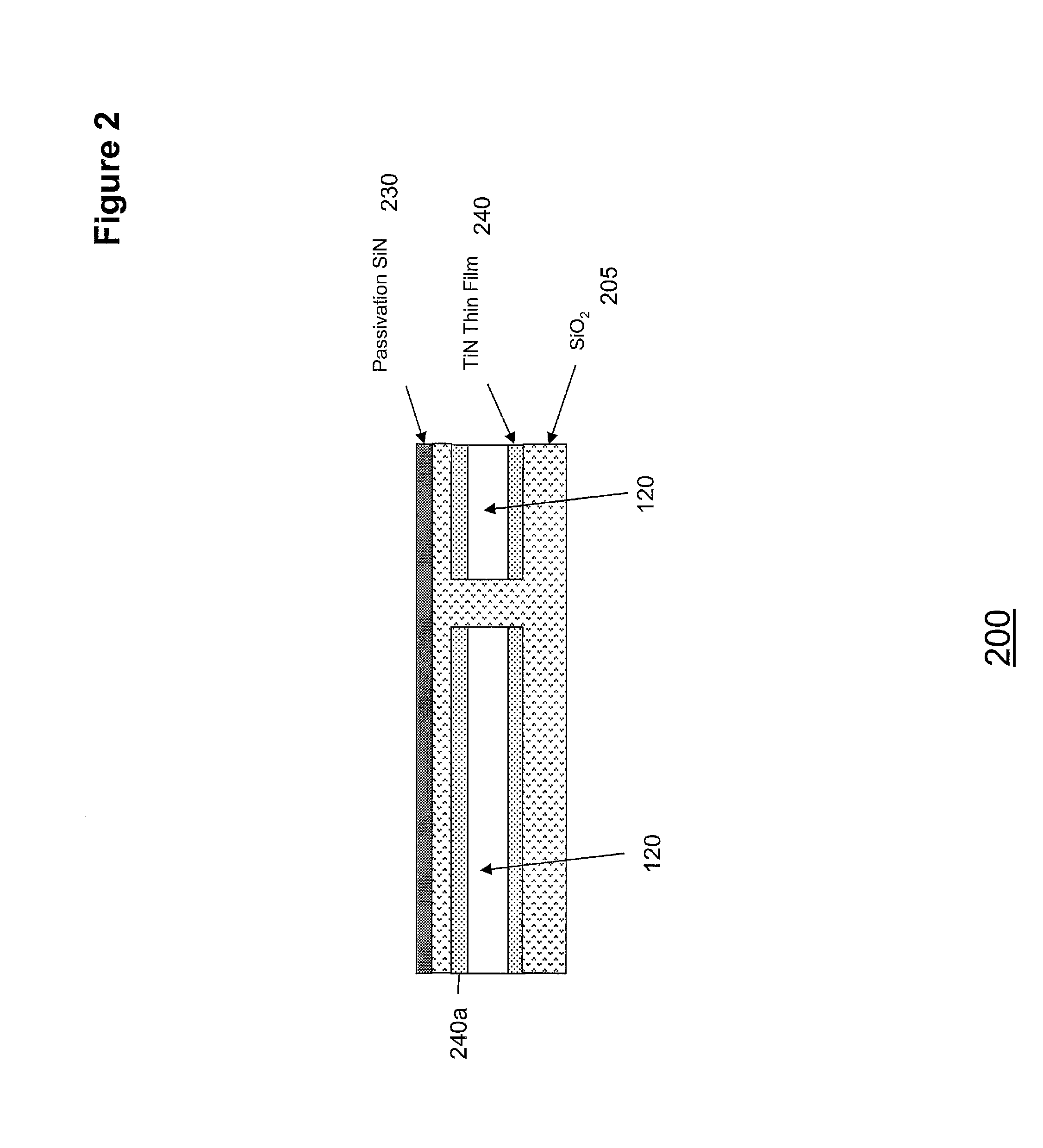Method of preventing stiction of MEMS devices
a technology of microelectromechanical systems and devices, applied in the direction of microelectromechanical systems, semiconductor devices, electrical apparatus, etc., can solve the problems of unintentional contact of surfaces with external environmental forces, increased risk of stiction, and undesirable situation of stiction, so as to prevent stiction
- Summary
- Abstract
- Description
- Claims
- Application Information
AI Technical Summary
Benefits of technology
Problems solved by technology
Method used
Image
Examples
Embodiment Construction
[0018]The present invention relates generally to the fabrication of MEMS devices, and more particularly to reducing the occurrence of stiction and hillock formations in Micro-Electro-Mechanical Systems (MEMS) devices. The present invention provides solutions to reduce or eliminate stiction and hillock formations during MEMS processing.
[0019]The following description is presented to enable one of ordinary skill in the art to make and use the invention and is provided in the context of a patent application and its requirements. Various modifications to embodiments and the generic principles and features described herein will be readily apparent to those skilled in the art. Thus, the present invention is not intended to be limited to the embodiment shown but is to be accorded the widest scope consistent with the principles and features described herein.
[0020]As used herein, the terms stop pads and dimples are intended to be used interchangeably and reflect physical attributes which are...
PUM
 Login to View More
Login to View More Abstract
Description
Claims
Application Information
 Login to View More
Login to View More - R&D
- Intellectual Property
- Life Sciences
- Materials
- Tech Scout
- Unparalleled Data Quality
- Higher Quality Content
- 60% Fewer Hallucinations
Browse by: Latest US Patents, China's latest patents, Technical Efficacy Thesaurus, Application Domain, Technology Topic, Popular Technical Reports.
© 2025 PatSnap. All rights reserved.Legal|Privacy policy|Modern Slavery Act Transparency Statement|Sitemap|About US| Contact US: help@patsnap.com



